Island Beach State Park: Meet the Programs!
When it comes to choosing which Island Beach State Park Programs are best for you, it’s tough to decide from so many great options!
So today we bring you the expert naturalists and educators who teach the programs. Hear their own evocative stories behind each program then decide what’s best for you!
Part 1, Monday, summarized these exciting programs. Part 2, Tuesday, highlighted the Harvest the Bay Day happening this Saturday, August 9 from 3-8pm. Part 4, Thursday, will be a round table interview with the Island beach State Park naturalists. And Part 5, Friday, will feature a personal account from one of CWF’s interns who works at Island Beach State Park.
John Leonard, Park Naturalist, Island Beach State Park
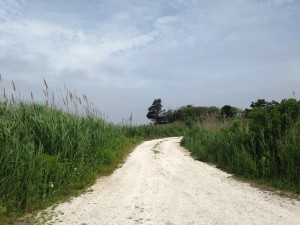 As a Park Naturalist for THE best park within the NJ Parks and Forestry system I’ve been able to do some wickedly fun and educational things within its borders for the past five years. From fishing its shores for monster striped bass, to kayaking and seining the waters of Barnegat Bay. Nothing satisfies me more than sharing those experiences and seeing the smiles with the thousands of visitors who visit our park daily. But what if I told you, the adventurous few, we have a program that happens only twice a summer, and is scheduled during a time and at a place where the park becomes virtually deserted. Alone. On a barrier island. Far from the lights and crowds you are accustomed to at the Jersey Shore. Tempted?
As a Park Naturalist for THE best park within the NJ Parks and Forestry system I’ve been able to do some wickedly fun and educational things within its borders for the past five years. From fishing its shores for monster striped bass, to kayaking and seining the waters of Barnegat Bay. Nothing satisfies me more than sharing those experiences and seeing the smiles with the thousands of visitors who visit our park daily. But what if I told you, the adventurous few, we have a program that happens only twice a summer, and is scheduled during a time and at a place where the park becomes virtually deserted. Alone. On a barrier island. Far from the lights and crowds you are accustomed to at the Jersey Shore. Tempted?
The Full Moon Hike begins deep in the park, 3.5 miles past our bathing beaches at our Nature Center, a building many say is haunted by old souls of the sea. After a quick introduction of your guides at dusk we begin our educational journey, slowly working our way westward through the dense maritime forest. Quietly walking all our senses slowly awaken. The sounds of far off birds, rustling of mammals and amphibians in the undergrowth searching for a meal, pungent odors of decaying matter all come into focus. Learning as we walk, taking note of all our surroundings. As we reach Barnegat Bay we are rewarded by a liquid orange sun dipping slowly beneath the horizon illuminating the sky in a spectrum of color, a perfect time to observe the bay and all its glory.
Retracing our steps with natural light fading we begin our trek ocean side. Dense, dark forest gives way to the moonscape like terrain of our secondary, then primary dune system. A place that seems inhabitable, but in fact are home to our famed red fox. In addition to being extremely important barriers of ocean storm surge, these dunes have been rumored to hold buried treasure from pirates as far back as the 1600’s.
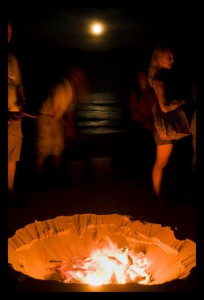 As we cross that final dune we leave the quiet solitude of the secondary dunes and are rewarded with an impressive elevated view of the ocean and sands which we’ve all come to love. Immediately we feel the air temperature drop, we hear thundering waves crashing on our pristine shores and view a brilliant burning fire just waiting for us to enjoy. Here we are free to enjoy the beach, collect shells or simply gather around the fire and enjoy the dancing flames as the yellow full moon slowly rises above the waves in the eastern sky. As an added bonus for all guests big and small, we are comforted by the melty goodness of roasting marshmallows, decedent chocolate and lightly sweet graham crackers to enjoy.
As we cross that final dune we leave the quiet solitude of the secondary dunes and are rewarded with an impressive elevated view of the ocean and sands which we’ve all come to love. Immediately we feel the air temperature drop, we hear thundering waves crashing on our pristine shores and view a brilliant burning fire just waiting for us to enjoy. Here we are free to enjoy the beach, collect shells or simply gather around the fire and enjoy the dancing flames as the yellow full moon slowly rises above the waves in the eastern sky. As an added bonus for all guests big and small, we are comforted by the melty goodness of roasting marshmallows, decedent chocolate and lightly sweet graham crackers to enjoy.
Please join us as we begin our journey.
“Seining tours are a fun, interactive way for kids and adults to gain first hand experience with the marine life in our area. They are also an invaluable tool for school groups learning about coastal ecology” – Becca Hanson, Seasonal Supervisor
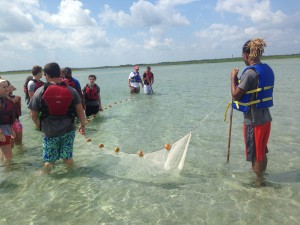 Did you know that IBSP offers free daily seining tours every day, twice a day? Pull a seine net through the Barnegat Bay and discover the amazing creatures who live here. Can you scare away hungry predators by growing twice your size in less than 6 seconds? A pufferfish can! Scoop up some silversides, the ‘french fries of the bay’, and understand the importance of this abundant fish in the Barnegat Bay food chain. Meet the snails, our bottom-feeding friends who keep the bay clean. What’s today’s catch of the day?
Did you know that IBSP offers free daily seining tours every day, twice a day? Pull a seine net through the Barnegat Bay and discover the amazing creatures who live here. Can you scare away hungry predators by growing twice your size in less than 6 seconds? A pufferfish can! Scoop up some silversides, the ‘french fries of the bay’, and understand the importance of this abundant fish in the Barnegat Bay food chain. Meet the snails, our bottom-feeding friends who keep the bay clean. What’s today’s catch of the day?
The Snorkel/Kayak Program at Island Beach State Park is a mix of snorkeling and kayaking in the Barnegat Bay. After a brief introduction and overview of the necessary kayaking skills, participants start the tandem kayaking adventure. All snorkel gear and kayak gear are provided. Park educators explain the ecology and importance of the Barnegat Bay and its ecosystems, and also review the different species that can be expected while snorkeling. When the tide is right, kayaks are anchored on a nearby sand bar and participants can snorkel in the adjacent deeper channel. Participants may see a variety of species, such as pipefish, crabs, flounder, hermit crabs, schools of bait fish, as well as different types of aquatic vegetation. This tour is new at the park and is becoming increasingly popular! Come join us for this unique underwater ecosystem viewing experience!
“From my personal experience with this program I find that it gives the children a wonderful hands-on approach to understanding the natural balance that takes place at Island Beach State Park.”- Josephine, Park Educator
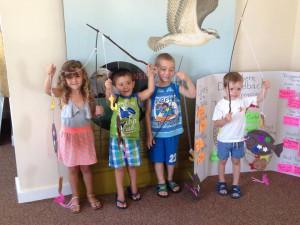
This program is specifically designed for children ages 3 to 5 years old and takes place at the Nature Center. Age-appropriate hands-on activities, stories, crafts and hikes guide your child’s natural curiosity as they explore the animals and plants of Island Beach State Park. Natural Educators provide an educational hour of fun for parents and their children.
“From an educators stand point, I find that this program truly enriches the child’s love of learning. This program is supported with appropriate children’s literature and affords the children the opportunity to learn hands on; which in my experience is the most beneficial. It is delightful to take part in helping to create memories that are sure to last for a life time!” – Lisa, Park Educator
This program is specifically designed for children ages 6 to 12 years old and takes place at the Nature Center. With the help of Natural Educators, children get the chance to explore the outdoors, make crafts, listen to stories, learn about animals, and investigate the local ecosystem. This is a two hour program that explores different topics each week such birds, turtles, jellyfish, and much more!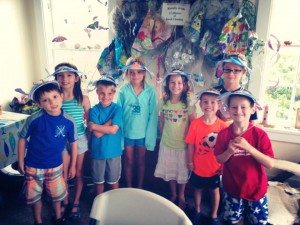
IBSP Kayak Tours
Most people come to Island Beach State park to enjoy the swimming beaches. They drive to Ocean Beach Area 1 or 2, spend a few hours on the beach and go home feeling satisfied with their visit to the park. Little do they know they have only scratched the surface in terms of what this park has to offer!
Kayak tours are one of the more popular activities provided by IBSP park educators. Below is a list of tours and a brief description of each:
Learn about the history of Island Beach dating back to the first recorded description in 1609 by Robert Juet, the first mate to Henry Hudson, the parks involvement in the Revolutionary war, the War of 1812, pirates in the park, all the way to present day uses. All of this is done while kayaking around the Island visiting important historical landmarks and enjoying the beautiful Island ecosystems.
“The sunset paddle is one of my favorite programs offered at the park. Being on the water, witnessing the natural serenity of the area and its inhabitants, and watching the brilliant colors of the sunset is an experience like no other.” – Kelly Scott, Park Naturalist
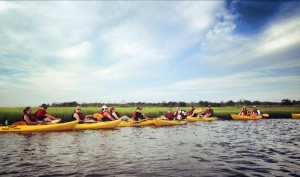 Enjoy a peaceful and relaxing evening paddle through the famous Sedge Islands and watch the sunset over Barnegat Bay. This is prime time for observing the parks different wildlife species, including egrets, herons, gulls, turtles and maybe even a lingering fox watching from shore.
Enjoy a peaceful and relaxing evening paddle through the famous Sedge Islands and watch the sunset over Barnegat Bay. This is prime time for observing the parks different wildlife species, including egrets, herons, gulls, turtles and maybe even a lingering fox watching from shore.
Learn about one of the largest estuaries in NJ by kayak! Park educators will discuss the bay’s geology, ecological function and importance, and local flora and fauna. In addition, the Eco-tour also includes a seining event to observe marine life and park educators will teach the “clammers dance.”
 Expert Park Natural Educators will guide you on a peaceful paddle through the dynamic Barnegat Bay estuarine ecosystem. Discover the diversity of birds that inhabit Island Beach State Park in the summer. We will discuss migration patterns and year-round residents. Keep an eye out for additional birding tour during the upcoming fall migration!
Expert Park Natural Educators will guide you on a peaceful paddle through the dynamic Barnegat Bay estuarine ecosystem. Discover the diversity of birds that inhabit Island Beach State Park in the summer. We will discuss migration patterns and year-round residents. Keep an eye out for additional birding tour during the upcoming fall migration!
Nature Center/Interpretive Center
Do you want to see wildlife close-up – and spend a day at the beach? Then come visit the Island Beach State Park Nature Center!
Once a coast guard building, the Nature Center showcases a unique combination of amazing views and lots of interactive fun for the whole family. Our Nature Center is home to a wide variety of local creatures from our 2 year old albino corn snake Newton, to our baby diamondback terrapins. Dont forget to take in the spectacular view from the top floor where the bay, the ocean, and Barnegat Bay lighthouse are all visible.
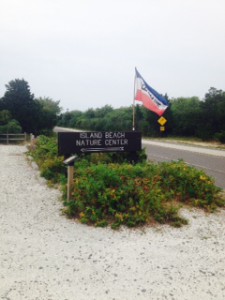 Just across from the Nature Center is the Forked River Interpretive Center where visitors can enter the world of yesterday and explore the incredible history of Island Beach State Park. Visitors can learn about the massive effort to bring Ospreys back to the Island, the historic Reeds Hotel and many other amazing stories and tales of life as it used to be on this breathtaking island.
Just across from the Nature Center is the Forked River Interpretive Center where visitors can enter the world of yesterday and explore the incredible history of Island Beach State Park. Visitors can learn about the massive effort to bring Ospreys back to the Island, the historic Reeds Hotel and many other amazing stories and tales of life as it used to be on this breathtaking island.
Before you leave, make sure you take a visitors guide and check out the Summer Programs offered by IBSP Park Naturalists and educators! Let us show you how much fun nature can be!
“Surfing Safari is by far the most popular WILDCHILD program offered at IBSP. Space is limited, and classes typically fill up fast. Register early to reserve your spot!” – Tom Seager, Park Educator
Surf’s Up Dude!
Learn about waves, what they are, where they come from, and why they break. Paddle out with expert Natural Educators and IBSP Lifeguards, and maybe you’ll be hangin’ 10 by the end of the summer! Drop off your child for two hours of fun!
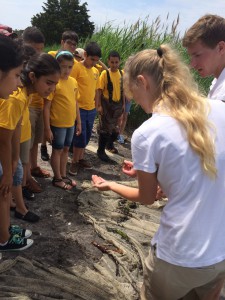
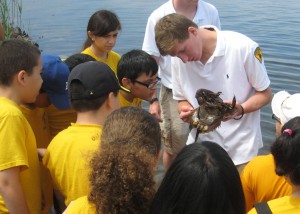
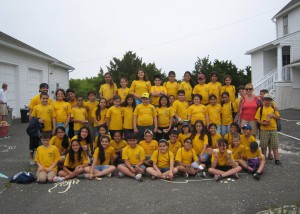
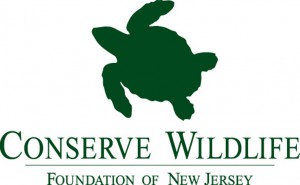
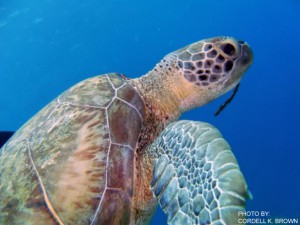
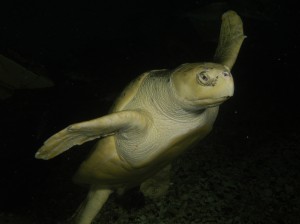
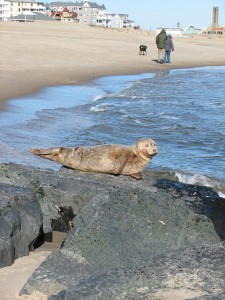
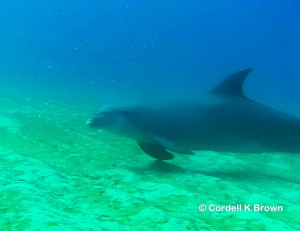
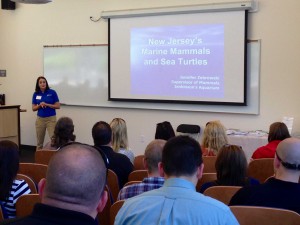
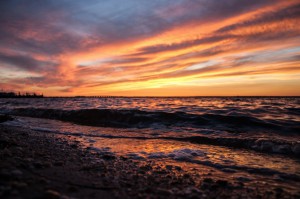
 “Absolutely anyone can be a birder.” says Ben Kingsley in the new movie,
“Absolutely anyone can be a birder.” says Ben Kingsley in the new movie, 
